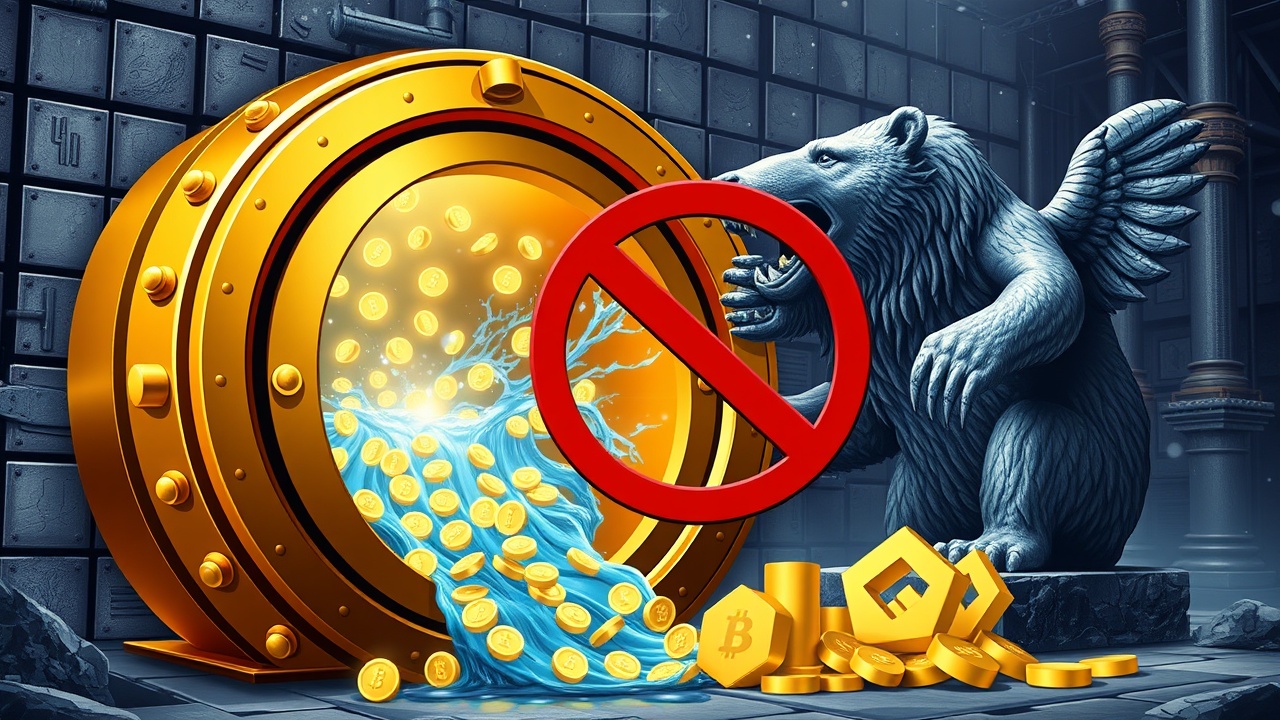Garantex and Its Cryptocurrency Assets
The sanctioned cryptocurrency exchange Garantex, despite recently facing restrictions, appears to have at least $15 million in crypto assets that are still actively being managed or remain quiet within various blockchain networks. This follows a significant freeze in which the U.S. government, alongside Germany and Finland, halted $26 million in Tether (USDT) linked to the exchange in early March.
Investigation Findings
In a detailed investigation conducted by the blockchain analytics company Global Ledger, it was uncovered that Garantex’s activities extend far beyond the frozen Tether assets. The analysis reveals that the exchange has been involved with multiple cryptocurrencies, including Bitcoin (BTC), Ethereum (ETH), as well as a variety of ERC-20 and BEP-20 tokens, including a ruble-pegged stablecoin known as A7A5.
Enforcement Actions and Reactions
The enforcement action targeting Garantex transpired over three days in early March and was publicly acknowledged by the exchange on March 6. On the same day the sanctions were announced, one Ethereum wallet linked to Garantex became operational after months of inactivity, holding approximately 3,265 ETH, equating to around $8.6 million. Following this, a series of transactions began as over $2 million worth of ETH was reportedly laundered via Tornado Cash, an Ethereum-based mixing service, with almost 845 ETH sent in smaller batches to complicate tracking efforts.
This ongoing activity has raised red flags, prompting Global Ledger to describe it as indicative of a targeted money laundering strategy intended to sever ties with the sanctioned exchange.
Bitcoin Movements and BNB Chain
In terms of Bitcoin, there are similar patterns emerging. A dormant aggregation of 19.39 BTC was identified, which later surged to 30.04 BTC, valued at around $3.17 million. Notably, some of this Bitcoin has been transferred to the TRON network in a strategic move to leverage the network’s efficiency. Lex Fisun, CEO of Global Ledger, noted that TRON’s low transaction costs and rapid processing times make it a favorable platform for converting Bitcoin into stablecoins, hinting at a possibility that Garantex’s successor may be leveraging TRON for smoother financial dealings.
Interestingly, the BNB Chain, unlike Ethereum or TRON, does not support Tether, which limits the ability to freeze assets here. Global Ledger found that Garantex’s funds on the BNB Chain came to a standstill on the day sanctions were introduced, yet there were no transactions, burns, or withdrawals recorded since March 6. The BNB reserves are estimated to be around $4 million as of June, which complicates the enforcement of sanctions.
Regulatory Challenges and Future Implications
Across all chains, Global Ledger estimates that a minimum of $15 million tied to Garantex remains in circulation, not considering any assets that may reside in untraced wallets or new tokens that have not yet been identified. The broader implications of these asset movements underline a loophole in the enforcement of multi-chain regulations. While freezing certain tokens like Tether can seem effective, these enforcement strategies may falter when cryptocurrencies move across different chains or into stablecoins not issued by American firms.
In reference to USDC holdings, Fisun explained that more than 290,000 USDC moved from blocked Garantex wallets just days before the freeze, suggesting that smaller balances may escape detection during such enforcement actions.
Ultimately, the findings paint a troubling picture of how regulatory measures may struggle to keep pace with the evolving landscape of cryptocurrency transactions. Ongoing trends signal that unless more cohesive multi-chain policies are implemented, enforcement actions may continue to face significant challenges.




